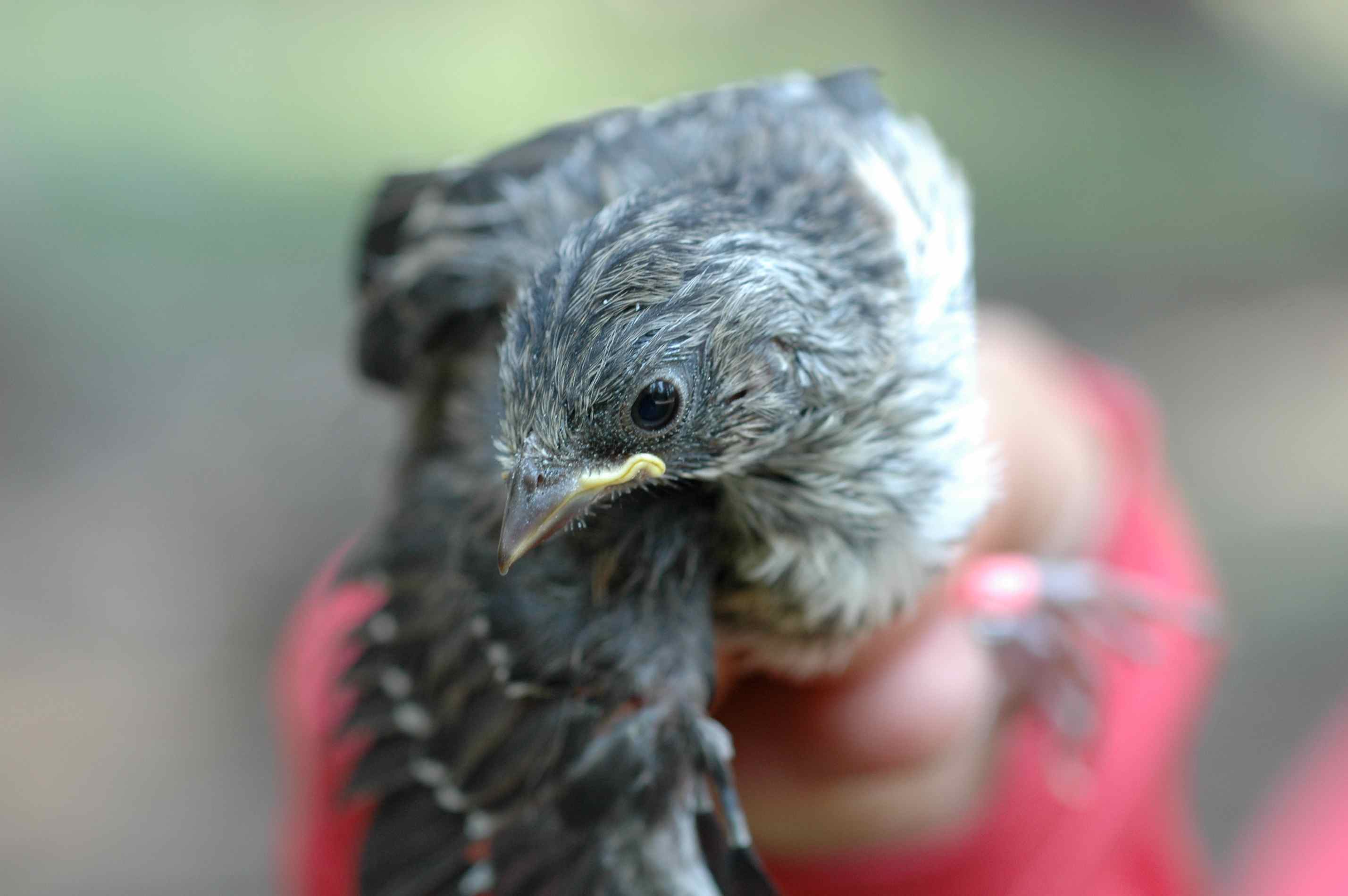
[mcpeake] do you own a few acres? do you wantto do something for wildlife? if you lack nest cavities on your property, here's a suggestionfor you. consider building or purchasing some nest boxes & putting them in strategic locationson your property. eastern bluebirds are a prime example of thespecies that have benefited from nest boxes. other species include wrens, wood ducks, woodpeckers,maybe even a tree squirrel or raccoon. joining us today is caroll guffey, extensionforrester. i'm really glad caroll is here today because i can barely hammer a nail.and caroll is going to talk to us about how to build these nest boxes. caroll, what dowe need to do? [guffey] ok, what we are going to do becky,today, is make a bluebird box. and this is
the basic design & to make it accessible tobluebirds we need to use an inch & a half hole. you can vary the size hole to vary thespecies of bird that use it. and what we do, we start out with just a five foot long, oneby six piece of lumber. and i've actually shown you, i've drawn off the different cutswe'll make on this board & i've already put the holes in it. you probably wouldn't dothat to start with, but just to show how it works i've got that done ahead of time. wemake all our cuts & we end up with these six boards that we'll put together to make thisbox. [mcpeake] and which one of these boards, whichone is the front & back, the bottom? can you show us?
[guffey] this is going to be the back of theboard. of course this is the front with the entrance hole. this will be the roof. andthen we have the two sides & then the bottom. and i would suggest waiting on the bottombecause based on the thickness of the material & it varies a little bit, i would make allthese cuts except for the bottom, & then i would put them all together. this is the twosides as they fit together. and then of course the roof goes there. and this would be thepoint where you would actually measure the opening to make sure that your bottom actuallyfits because, again, based on the thickness of the material, it may not be exactly themeasurements we have in the faq sheet. [mcpeake] well caroll, what types of woodwould you recommend for building a nest box?
[guffey] becky, we have a lot of differentoptions on the wood. the one option we would not want to use would be treated lumber, becausethat's not good for the baby birds. we can use western red cedar, this is an exampleof that. we can use eastern red cedar, which is common in arkansas. both of those willlast for a long time without any type of treatment, but they are a little more difficult to workwith. they split a little. [mcpeake] yeah, this one has a splitting problemright here. [guffey] so what i have here is just our pinelumber. southern yellow pine lumber. it's very easy to work with, very common, it'sgoing to last quite a bit of time, but if you really want it to last longer, you canpaint it. paint it a light color because of
the temperatures we have here in arkansas. [mcpeake] that's for sure, it gets really,really hot here in arkansas, but don't paint the insides. [guffey] that's right, just paint the outside. [mcpeake] just the outside. [guffey] again, the paint is really more forthe people, it's not for the birds, because they really don't care one way or the other. [mcpeake] can we use the same dimensions thatyou designed for that, just expand them a little bit, and make something like a woodduck box?
[guffey] this is a similar design. it uses,it's bigger material & again for the wood duck, we have a much bigger hole than we dofor a small bluebird. [mcpeake] ok, well how would you recommendthat we place these out once we get our nest box built? [guffey] if you think you want to nail itto a tree, that's probably not the best option, but you can nail it to a tree as long as youdon't use steel or iron nails. use aluminum nails. nailing it to the tree, again, maynot be the best option because it kind of damages the tree for one thing. it also, it'smore or less permanent. it's hard to move it if you need to.
[mcpeake] that's true. and predators, theylove to get up & down trees & get into those nest boxes & eat the eggs & nestlings, soif you can put it on a pole, you could actually put a predator control device around it & keep them out. [guffey] that's right. that's a much betteroption, a pole or a fence post with some type of predator preventer. [mcpeake] well, thank you so much caroll forvisiting with us today. check out our website for more information on wildlife & wildlifehabitat. [narrator] to learn more about this & othertopics, contact your county extension agent & visit uaex.edu

